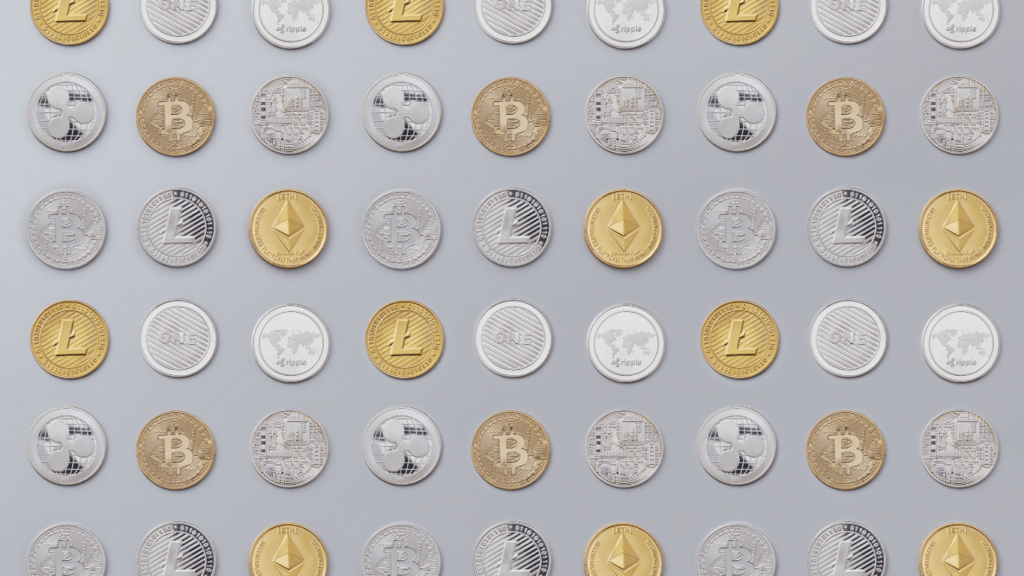Understanding NFTs: A Brief Overview
Non-Fungible Tokens (NFTs) are unique digital assets verified using blockchain technology. Each NFT represents something specific, whether art, music, video, or other digital content. Unlike cryptocurrencies like Bitcoin or Ethereum, which are interchangeable, NFTs hold individual value due to their distinct properties.
NFTs use blockchain to ensure ownership and authenticity. The blockchain is a decentralized ledger recording transactions across many computers. This process creates a transparent and unalterable record, verifying NFT ownership without needing third-party verification.
The Ethereum blockchain typically hosts NFTs through smart contracts. Smart contracts are automated agreements that execute actions when conditions are met. For NFTs, smart contracts handle tasks like transferring ownership or verifying authenticity.
Key characteristics of NFTs include:
- Uniqueness: No two NFTs are the same. Each has unique information such as metadata and identifiers, distinguishing them from others. An example is a specific piece of digital artwork.
- Indivisibility: NFTs can’t be divided into smaller units. They exist as whole items, unlike cryptocurrencies that are fractionable.
- Ownership: Blockchain ensures that the creator or current owner is identifiable. If you buy an NFT, the ledger shows your ownership transparently.
- Interoperability: NFTs can be used across various platforms and marketplaces due to standardized protocols. A digital collectible bought on one platform can be sold on another.
Understanding these fundamental aspects of NFTs helps to see why they hold significant value.
The Rise of NFTs in the Digital Marketplace
NFTs have rapidly gained traction in the digital marketplace, driven by their unique capabilities and technological advancements. This section delves into the historical context and key milestones that have shaped their prominence.
Historical Context
NFTs emerged in the early 2010s due to blockchain development. In 2012, Colored Coins, representing real-world assets on the Bitcoin blockchain, marked an early attempt at creating unique digital items. CryptoPunks, launched in 2017, brought NFTs mainstream attention, offering 10,000 unique collectible characters on the Ethereum blockchain.
Key Milestones
Several key events have defined the trajectory of NFTs.
- CryptoKitties (2017):
CryptoKitties, a blockchain-based game for breeding and trading virtual cats, caused such a surge in network traffic that it clogged Ethereum. This highlighted both the popularity and scalability issues of NFTs. - Art Sales (2021):
Beeple’s “Everydays: The First 5000 Days” sold for $69.3 million at Christie’s, setting a record for digital art and showcasing NFTs’ potential in the art world. - Celebrity Endorsements:
High-profile figures like Snoop Dogg and Grimes released their own NFTs, bringing widespread attention to the technology. - Sports Partnerships:
The NBA launched Top Shot, a platform for trading highlight clips as NFTs, amassing over $230 million in sales by early 2021.
These milestones demonstrate NFTs’ growing influence across various sectors, reinforcing their value in the digital marketplace.
Factors Contributing to the Value of NFTs
Adding tangible value to digital assets, several factors boost an NFT’s worth in the market. This section dives into their scarcity, the artist’s reputation, and the utility they offer.
Scarcity and Rarity
NFTs are often valuable due to their limited availability. Owning a unique or rare digital item can significantly increase its desirability. For example, CryptoPunks only has 10,000 unique characters. When the supply is limited, the perceived value of the NFT rises due to basic supply and demand principles.
Artist Reputation and Provenance
The credibility and fame of the creator play a substantial role in an NFT’s value. Works by notable figures like Beeple attract higher prices. Also, blockchain technology ensures provenance, which verifies the history of ownership and authenticity—boosting buyer confidence.
Utility and Functionality
Beyond their inherent artistic value, NFTs often have practical uses. For instance, some NFTs provide exclusive access to events or content. Others may be integrated into virtual worlds or used in games. Such functional benefits elevate an NFT’s worth by offering real-world utility.
Each of these factors—scarcity, reputation, and utility—plays a vital role in shaping the perceived value of NFTs. Understanding them can help one navigate the complex and dynamic NFT marketplace.
Real-World Applications of NFTs
NFTs are increasingly finding practical use cases in diverse industries. Their unique properties create opportunities beyond mere digital art ownership.
Art and Collectibles

Art and collectibles remain the most recognized NFT applications. Artists mint NFTs for digital artworks, preserving ownership and provenance on the blockchain. Platforms like OpenSea and Rarible facilitate buying and selling digital art. Limited edition NFT releases, such as Beeple’s “Everydays: The First 5000 Days,” command high prices. Collectors value the exclusivity and verifiable ownership of these digital assets.
Gaming and Virtual Realities
Gaming and virtual realities see significant NFT integration. In-game items like skins, weapons, and characters are tokenized, giving players true ownership.
Games like Axie Infinity and Decentraland allow players to trade NFTs, creating real economic value. These NFTs often retain value across various games or virtual platforms, offering players additional incentives.
Intellectual Property and Patents
NFTs streamline intellectual property (IP) and patent management. By tokenizing IPs and patents, creators and inventors ensure their rights are clear and easily verifiable on the blockchain.
Transactions involving IP are more transparent and secure. Platforms like IBM’s blockchain patent platform leverage NFTs for IP licensing, reducing disputes and enhancing trust among parties. This application enhances efficiency in legal and business practices related to intellectual property.
Challenges and Criticisms
While NFTs offer numerous advantages, they also face significant challenges and criticisms. Addressing these concerns is essential for understanding the full scope of their impact and potential.
Environmental Impact
NFTs consume substantial energy due to blockchain technology. Blockchain networks like Ethereum use Proof-of-Work (PoW) consensus mechanisms, which require immense computational power.
Mining and transaction verification on these networks result in high carbon footprints. According to Digiconomist, Ethereum’s annual energy consumption rivals that of some small countries.
Efforts are underway to transition to more sustainable models, such as Ethereum’s planned shift to Proof-of-Stake (PoS), which could markedly reduce energy usage.
Market Volatility
NFT values fluctuate significantly due to various factors. The NFT market can experience rapid price increases, followed by sharp declines. In March 2021, the average price of an NFT dropped from nearly $4,000 to around $1,500 in a matter of weeks, illustrates NonFungible.com. This volatility stems from speculative trading, media hype, and market sentiment. Such price swings can lead to financial risks for investors, stressing the need for careful market assessment and risk management.
Legal and Regulatory Issues
The legal framework surrounding NFTs remains underdeveloped. Questions about intellectual property rights, ownership disputes, and fraudulent activities complicate the market. In some cases, artists found their work tokenized and sold without permission. Regulatory bodies worldwide are only beginning to address these challenges.
For instance, the U.S. Securities and Exchange Commission (SEC) is investigating whether certain NFTs qualify as securities, which could impose stricter regulations. Users and creators should stay informed about evolving legal landscapes to navigate potential risks.
Addressing these challenges is crucial for the sustainable growth of the NFT market, requiring ongoing efforts from developers, users, and regulators.
Future Prospects of NFTs
The future of NFTs looks intriguing with potential for significant growth across various sectors. Technological innovations and market predictions are key pointers driving their evolution.
Technological Innovations
Upcoming technological advancements promise to enhance the functionality and appeal of NFTs. Integration with augmented reality (AR) and virtual reality (VR) platforms could offer immersive experiences, allowing users to interact with digital assets in novel ways. For example, virtual art galleries could showcase NFT art pieces in 3D spaces.
Improvements in blockchain technology, especially efforts to reduce energy consumption, are under constant development. The transition from Proof-of-Work to Proof-of-Stake in networks like Ethereum aims to create a more sustainable environment. Additionally, layer 2 scaling solutions are expected to alleviate congestion and lower transaction costs.
Interoperability between different blockchain networks is another promising innovation. Cross-chain technology could enable NFTs to move seamlessly between platforms, expanding their usability and market reach. Enhanced smart contract functionalities might also introduce conditional ownership and royalties, further enriching the NFT ecosystem.
Market Predictions
Popularity and acceptance of NFTs are expected to grow across various industries. Mainstream adoption by entertainment, sports, and fashion brands indicates a broader cultural integration of NFTs, which could normalize their use and drive demand.
Market analysts predict substantial growth in the global NFT market. According to a report by MarketsandMarkets, the NFT market, valued at about $3 billion in 2021, could surpass $13 billion by 2027. This growth is backed by increasing interest from institutional investors and the rise of NFT-based financial products like staking and lending.
NFT monetization models are likely to diversify. For example, subscription-based access to exclusive NFT content might become more prevalent. Likewise, fractional ownership of high-value NFTs could allow smaller investors to participate in the high-end market.
Regulatory clarity is expected to improve, providing a stable framework for NFT transactions. As governments and regulatory bodies establish guidelines, investor confidence could rise, propelling further market development.

 Alice Morillo is a prominent figure at The Digi Chain Exchange, known for her passion and expertise in the field of cryptocurrency and digital finance. With a keen interest in the evolving landscape of blockchain technology, Alice has dedicated herself to providing insightful content that helps both new and seasoned investors navigate the complexities of the crypto world. Her contributions to The Digi Chain Exchange reflect her deep understanding of market trends, trading strategies, and the regulatory environment surrounding digital assets.
Alice Morillo is a prominent figure at The Digi Chain Exchange, known for her passion and expertise in the field of cryptocurrency and digital finance. With a keen interest in the evolving landscape of blockchain technology, Alice has dedicated herself to providing insightful content that helps both new and seasoned investors navigate the complexities of the crypto world. Her contributions to The Digi Chain Exchange reflect her deep understanding of market trends, trading strategies, and the regulatory environment surrounding digital assets.

